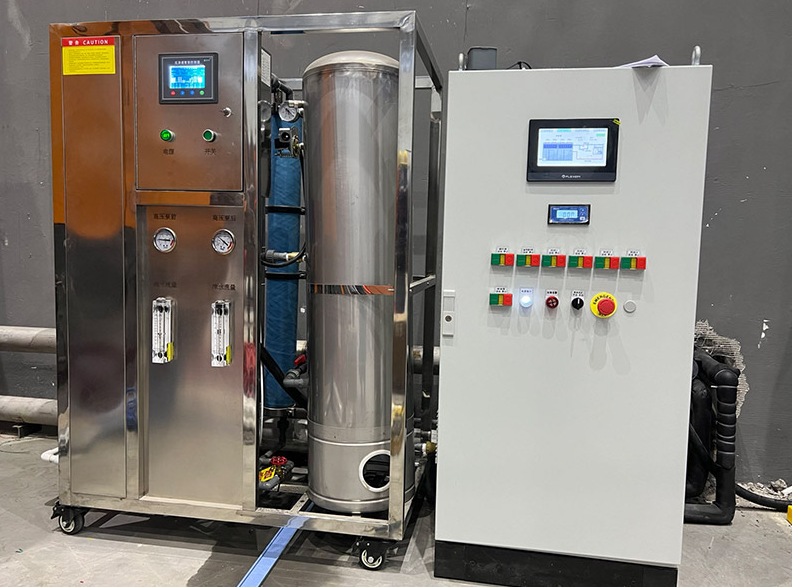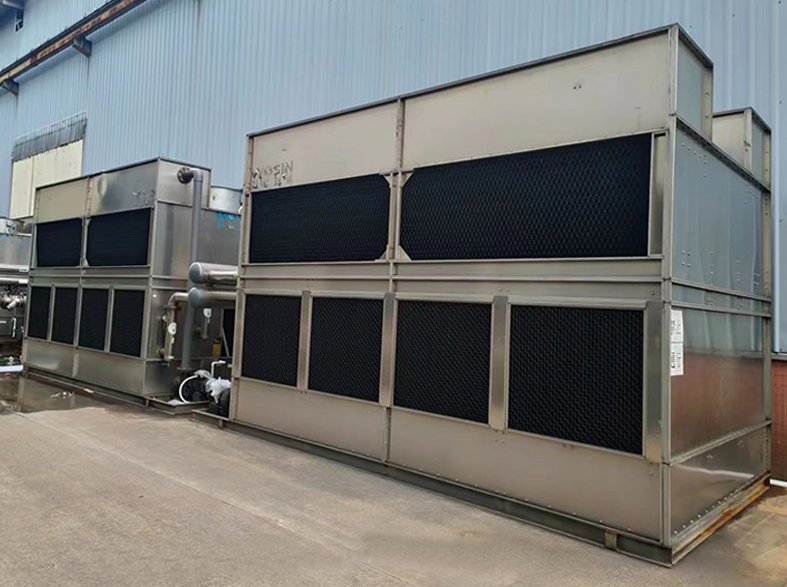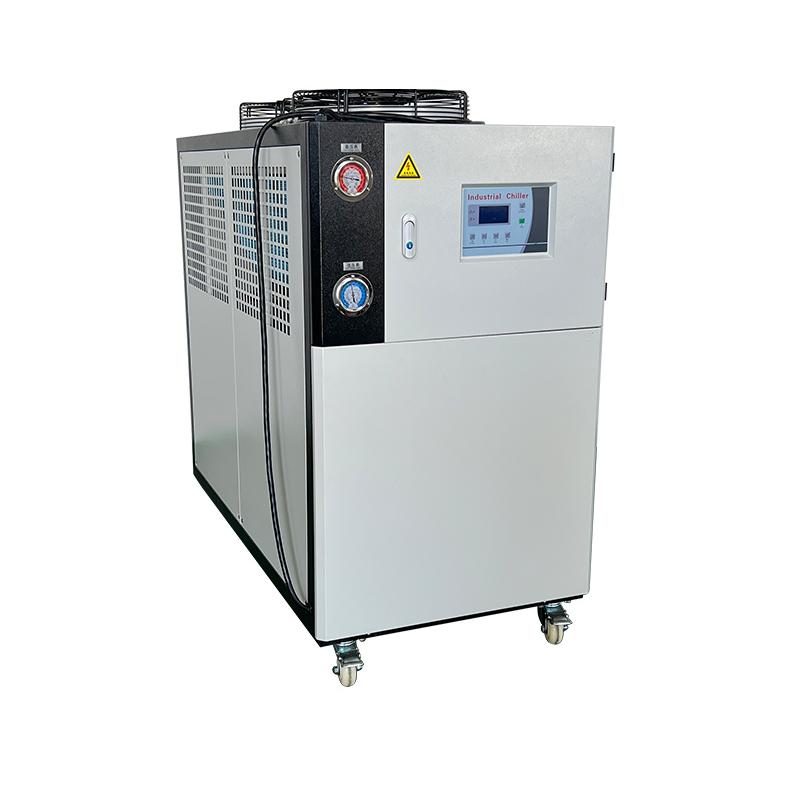Maximizing Efficiency: How Furnace Cooling Unit Enhances Metal Production
Picture, if you will, the immense heat generated inside a furnace during metal production—a furnace so hot that its internal temperature can soar past 1,600°C (2,912°F). At these extreme levels, controlling the heat is paramount, as failure to do so can rapidly escalate into a major operational dilemma. This is precisely where furnace cooling units—specifically those designed for Medium Frequency Melting Furnaces—become indispensable. These specialized cooling systems are designed to maintain optimal temperature conditions, preventing overheating and ensuring the continuous, efficient operation of metal production processes within industries such as foundries, steel mills, and smelting plants.
In sectors where metal melting and casting are daily tasks, the need for precise temperature control goes beyond safety—it has a direct impact on energy efficiency, product quality, and the longevity of the equipment. By efficiently managing the heat generated during the melting process, the Medium Frequency Melting Furnace cooling unit offers a reliable solution to mitigate these challenges. In this post, we will explore the crucial function of furnace cooling units and the wide-ranging problems they help solve across metal production industries.
Key Elements of Furnace Cooling Units
The Technology Behind High-Performance Cooling Systems
A furnace cooling unit operates as an intricate system composed of various interconnected components, including cooling pipes, heat exchangers, pumps, and temperature control units, all working cohesively to regulate and stabilize the internal furnace temperature. These components are crucial in ensuring the furnace operates within designated safe and efficient thermal parameters, preventing extreme overheating that could lead to catastrophic damage.
The amount of heat produced by a medium frequency melting furnace during the metal melting process is staggering. Without an effective cooling system in place, there is a real risk of the furnace overheating. This can result in multiple issues, including accelerated wear and tear of furnace components, a significant drop in energy efficiency, and the potential for the metallurgical process to be compromised. The cooling unit’s primary function is to circulate coolant—typically water or specialized solutions—through pipes or heat exchangers. As the coolant absorbs excess heat, it transports the unwanted energy away from critical parts of the furnace, ensuring that the temperature remains within a controlled range essential for proper melting and casting.
Furthermore, the cooling system’s temperature control units are crucial in maintaining a continuous monitoring function, adjusting the cooling flow in real-time to balance heat absorption and dissipation. By maintaining such a delicate equilibrium, furnace cooling units safeguard both the operational lifespan of the furnace and the integrity of the final metal products produced within.
The Operational Risks of Without Adequate Cooling
Overheating Threats in Metal Manufacturing Processes
In the metal manufacturing sector, unchecked heat can create significant problems that jeopardize both production efficiency and product quality. For example, in a steel mill, scrap metal is subjected to intense heating within a medium frequency melting furnace. Should the furnace fail to adequately manage the heat, the resultant thermal stress could lead to deformation, equipment failure, and severe damage to essential furnace parts. Not only does this result in substantial repair or replacement costs, but it also causes downtime in the production process, which in turn delays operations and results in costly financial setbacks.
Moreover, overheating can significantly alter the properties of molten metal. Each type of metal or alloy has a specific temperature range that must be adhered to in order to achieve the desired metallurgical properties. For instance, in the production of steel, precise temperature control is necessary to ensure that the molten steel is optimally suited for molding, forging, or further processing. In aluminum smelting, failure to regulate temperature may result in oxidation or other forms of contamination, reducing the quality of the final product.
Clearly, the need for a dependable furnace cooling system cannot be overstated. Without proper temperature regulation, companies risk escalating operational costs, compromised product quality, and even severe environmental consequences such as gas emissions or further damage to critical equipment.
How Furnace Cooling Units Provide Solutions
Enhancing Operational Efficiency and Cutting Costs
The implementation of a Medium Frequency Melting Furnace cooling unit offers a multitude of advantages, effectively addressing many of the inherent challenges found in metal production facilities. By ensuring precise temperature control, these systems help prevent overheating, thereby enhancing operational efficiency and mitigating risks associated with furnace malfunctions. The following are some key benefits offered by furnace cooling units:
Improved Energy Efficiency: By keeping furnace temperatures at optimal levels, the cooling system reduces the energy required to maintain furnace operations. As excess heat is dissipated efficiently, energy wastage is minimized, leading to lower operational costs. Furthermore, less energy is needed to cool the furnace, which reduces overall electricity consumption and helps to establish a more sustainable, eco-friendly operation.
Prolonged Equipment Lifespan: Furnace components exposed to extreme heat—such as coils, refractory linings, and electrical systems—are particularly vulnerable to premature wear. By mitigating the effects of overheating, a properly functioning cooling system significantly extends the lifespan of critical components, decreasing the frequency of repairs or replacements and resulting in long-term savings.
Enhanced Product Quality: Consistent and accurate temperature regulation is essential for achieving high-quality metal products. Whether the process involves steel, aluminum, or other alloys, maintaining a stable temperature ensures that the desired metallurgical properties are achieved. This reduces the likelihood of defects during casting, leading to better consistency and fewer quality issues in the final output.
Practical Applications of Furnace Cooling Units in Various Industries
Foundries: Temperature Regulation for Superior Casting
Foundries are among the primary industries that rely heavily on medium frequency melting furnaces to process a variety of metal alloys, including cast iron, steel, and non-ferrous metals. These alloys require precise temperature management to retain their specific properties during the casting phase. In such an environment, the role of the furnace cooling unit becomes essential to ensure that the metal remains at the ideal temperature throughout the entire process.
Without an efficient cooling system, the molten metal could easily overheat, resulting in variations in both temperature and composition. These fluctuations lead to poor-quality castings, which can be costly to correct. Additionally, overheating can damage the furnace, leading to extensive downtime for repairs. By maintaining steady temperature control, the cooling unit ensures that the melting and casting operations proceed smoothly, with minimal risk of defects.
Steel Mills: Heat Management for Effective Steelmaking
Steel mills utilize medium frequency melting furnaces to transform scrap steel into molten metal that will later be cast into products. The sheer intensity of the heat produced during the melting process can put a tremendous amount of strain on the furnace, potentially leading to mechanical failures or damage. A well-designed cooling unit is crucial in helping steel mills manage these high temperatures, keeping the furnace from overheating and ensuring smoother, more efficient operations.
The cooling system’s ability to maintain stable temperatures is particularly vital during the transition from melting to casting. This ensures that the molten steel stays within the correct temperature range for proper pouring into molds, which ultimately improves the efficiency of the steelmaking process and minimizes the risk of defects in the final product.
Aluminum Smelting: Maintaining Optimal Furnace Performance
The aluminum smelting industry faces many of the same challenges related to temperature control as other metal industries. Aluminum is particularly sensitive to temperature variations, making stable heat regulation crucial for achieving high-quality aluminum ingots, billets, and other cast products. The furnace cooling unit works alongside the furnace to ensure temperature stability, optimizing the smelting process and improving operational efficiency.
In the case of aluminum, overheating can lead to oxidation and other impurities, significantly diminishing the quality of the molten metal. The cooling system plays a pivotal role in maintaining ideal temperature conditions, thus allowing for a more efficient smelting process with fewer defects.
Conclusion: The Strategic Value of Investing in Furnace Cooling Systems
Why Furnace Cooling is Essential for Long-Term Industry Success
Investing in a high-performance furnace cooling unit is not merely a tactical move; it is a long-term strategy that can yield substantial returns for metal manufacturing facilities. From reducing energy consumption and extending equipment life to enhancing product consistency and reducing downtime, the advantages of an efficient cooling system are clear.
Furnace cooling solutions from industry leaders such as Taizhou Hongkang Electric Co., Ltd. are tailored to meet the specific needs of metal production environments. Whether used in foundries, steel mills, or aluminum smelting plants, these cooling units are designed to maximize operational efficiency, reduce operational risks, and help businesses stay competitive in a demanding market.
Ultimately, furnace cooling systems are not only a safeguard against excessive heat—they are a key contributor to the success and sustainability of the metal production industry, playing a pivotal role in ensuring smooth operations and high-quality output.



